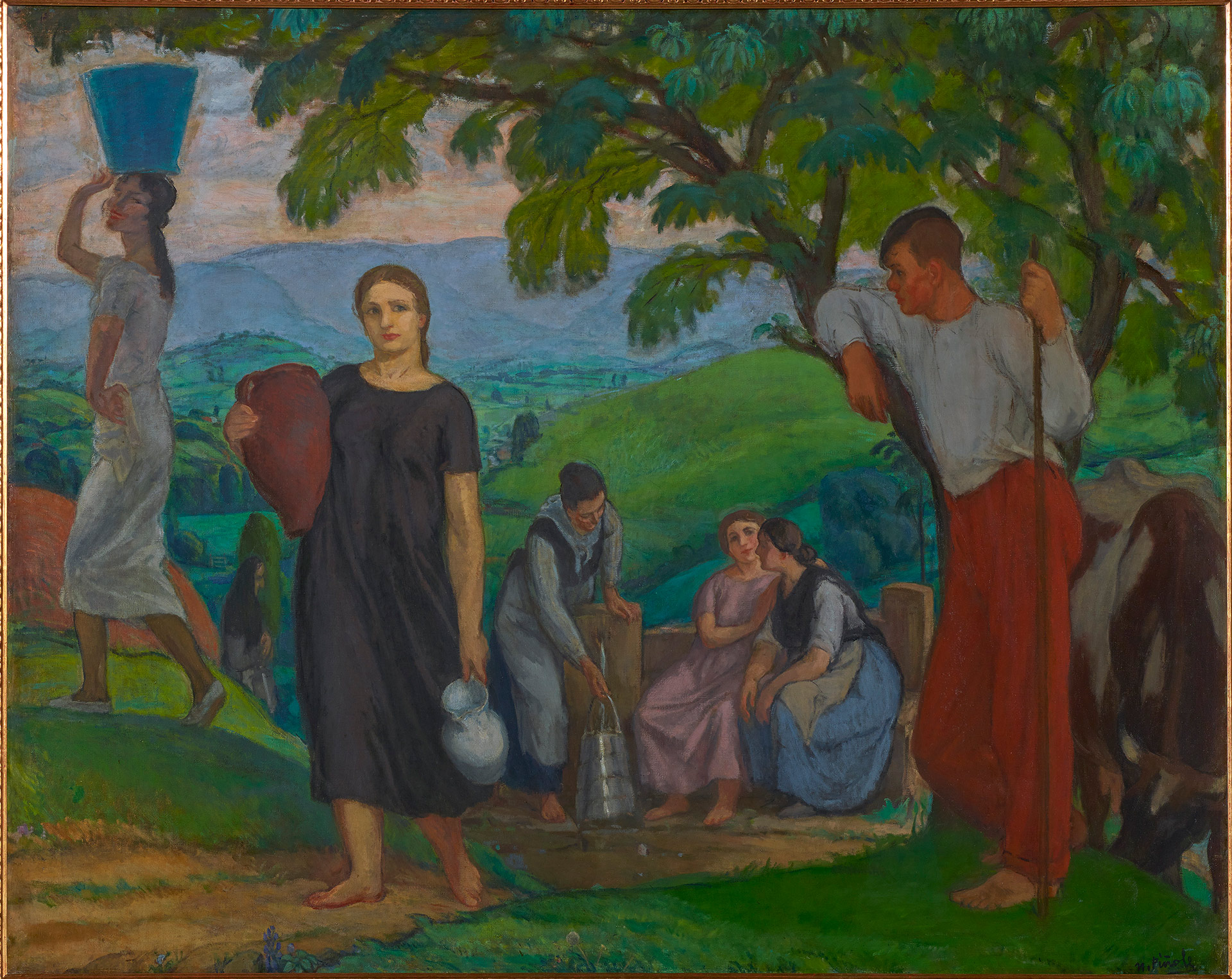
Nicanor Piñole (Gijón, Asturias, 1878–1978)
The Fountain
1925
WORK INFORMATION
Oil on canvas, 165 x 207 cm
OTHER INFORMATION
Signed in the lower right-hand corner: "N. Piñole"
Nicanor Piñole, a painter with strong ties to his family and homeland, returned to the city of his birth after completing his training at the Special School of Painting, Sculpture and Engraving in Madrid and in Rome. Settled in Gijón, from the first decade of the 1900s he did his best to move past the naturalist aesthetic of previous years. The intimacy of family life inspired him to paint his relatives and friends on numerous occasions, among them María Teresa González del Valle, whom he portrayed around 1900 with delicate understatement in a likeness sometimes mistaken for that of his cousin, Josefa Prendes Rodríguez. However, her features can be identified by comparing this work with another bust-length portrait he painted in 1899 (Oviedo, private collection). Josefa or "Pepita" Prendes was actually much younger at the time, a mere girl, as shown in another painting in the Banco Santander Collection made around 1903. The daughter of Manuel Prendes and Manuela Rodríguez, the artist's uncle and aunt to whom he was quite close, Pepita was Piñole's favourite cousin and posed for him numerous times. This work is representative of a fascinating moment in the painter's career: in the manner of other painters of the naturalist generation in Rome, he took a canvas on which he had painted a Moor, still clearly visible in the background, and reused it to create a frankly modern portrait of his cousin using synthetic planes and a very sober palette of white tones over red.
Piñole participated in the National Fine Arts Exhibitions and, during his stays in Madrid, kept company with the painters who regularly attended intellectual discussions at the Nuevo Café de Levante, a hotbed of pictorial renewal. One of those visits inspired him to paint Herdsmen in Plaza de Cibeles, an urban scene set in Madrid that nevertheless reflects his personal interest in rural life thanks to the presence of ox-drawn carts in the foreground on Calle de Alcalá, parallel to the gardens of Buenavista Palace. This almost provincial view of the capital tells us that, unlike many of his contemporaries, Piñole's primary interest was not the changes brought on by the appearance of the new modes of transport (trams and automobiles) visible in the background. The artist based his composition on a watercolour with tempera that he gave to Enrique Lafuente Ferrari many years later.
The Fountain, an example of the large, monumental compositions cultivated by the artist, was submitted to the 1926 National Exhibition. It is an ode to rural life in Asturias set at the fountain of Falmuria, which he studied and sketched in at least eighteen drawings now in the Museo Piñole, Gijón. He also set many works in his native Gijón, where the artist recreated beach and port scenes in a highly personal manner. The shift away from naturalism and towards a subtly melancholy expressivity rendered in washed-out colours and dominant ochres characterised his mature oeuvre, as illustrated by The Girls from the Port, for which there is an oil on panel modello (private collection, Gijón) and a preliminary drawing (Museo Nicanor Piñole, Gijón).
Finally, Dolls in the Port demonstrates Pinole's skill as a draughtsman and expertise in the use of gouache. With the Gijón docks in the background, this drawing is one of several studies he made between 1929 and 1935 using two wooden dolls brought from Germany, in which the artist captured the lifeless ambiguity of the figures. [Javier Barón Thaidigsmann]

